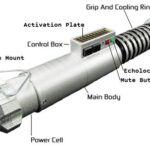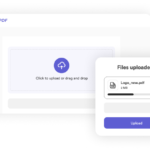A high-converting website adeptly turns visitors into customers, often at rates significantly higher than the industry average. This prowess is not accidental but the result of meticulous design, thoughtful messaging, and a user experience that helps to remove any barriers between the visitor encountering the site and taking the desired action. The most effective websites in terms of conversion rates consistently prioritize these aspects, ensuring that each step in the user journey is intentional and conducive to conversion.
Creating a lasting first impression through esthetically pleasing and functional design is fundamental to high conversion rates. It’s not just about looks, but rather how the design serves the visitor. User experience (UX) takes the spotlight in this process. By leveraging data and analytics, high-converting websites are regularly refined to enhance performance, tailoring the online environment to meet and exceed user expectations. Conversion Rate Optimization (CRO) strategies are employed to make certain that every element on the page has a purpose and supports the ultimate goal of converting visitors.
Key Takeaways
- Effective websites transform visitors into customers by optimizing every element for conversion.
- Design and user experience are critical in making a strong first impression that aligns with user needs.
- Regular use of data and analytics guides the continuous improvement of website performance to boost conversions.
Design and User Experience
High-converting websites blend appealing aesthetics with functional design, facilitating a seamless user journey from the entry point to conversion. The user experience (UX) is paramount, often determined by the interplay between visual elements and navigational structure.
Engaging Layout
An engaging layout captures users’ attention and encourages them to stay on the site. This involves a strategic use of visuals and color to create a harmonious and branded appearance. White space is effectively utilized to prevent clutter, allowing users to focus on important content. Fonts are chosen for readability and brand consistency, ensuring information is accessible.
Responsive Web Design
A website must display well across a variety of devices, adjusting to different screen sizes without compromising functionality or aesthetics. Responsive web design ensures that landing pages and other website elements adapt in real-time, providing a consistent user experience whether accessed via mobile, tablet, or desktop.
User-Friendly Navigation
Navigation is the guidance system of a website, critical to helping users find what they are looking for. Menus should be logical and intuitive, offering a clear path to relevant subsections. By simplifying the user’s path to information or conversion points, the website can prevent frustration and reduce bounce rates, directly influencing its conversion performance.
Content and Messaging
High-converting websites combine compelling messaging with strategic content to guide visitors toward taking action. Content clarity and persuasive copy play pivotal roles in conversion optimization.
Value Proposition
A value proposition is a clear statement that explains how a product or service solves a customer’s problem or improves their situation. It should be bold and upfront, ideally placed above the fold on the homepage, so visitors understand the unique benefits immediately. Video content can be an effective medium for conveying a value proposition as it can showcase features and benefits in a dynamic and engaging way.
Effective Headlines and CTAs
Headlines must grab attention and convey the essence of the content with precision. The use of strong headlines and persuasive calls to action (CTAs) guides users towards the desired action, whether it’s making a purchase, signing up for a newsletter, or filling out a contact form. CTAs should be concise, use commanding verbs, and create a sense of urgency or benefit.
- Examples of effective CTAs include:
- “Buy now and save 20%”
- “Get started today for free”
- “Join our community”
High-Quality Content
Content should provide value and be extremely relevant to the target audience. It includes not just text but also images, videos, and infographics that are informative and add to the user experience. High-quality content is well-structured, easy to read, and tailored to address the visitor’s needs or questions. It’s essential that the content reflects the brand voice and contributes to the overall goal of the website, constantly reinforcing the messaging and driving conversions.
Conversion Rate Optimization Strategies
Conversion rate optimization (CRO) strategies are vital for turning visitors into customers. Utilizing rigorous testing and leveraging psychological triggers can significantly increase the likelihood of conversions.
A/B Testing and Analytics
To optimize conversion rates, one must employ A/B testing to make data-driven decisions. By creating two versions of a web page (A and B), they can compare and identify which one performs better in terms of user engagement and conversion. Google Analytics plays an integral role in this process, offering insights into user behavior and bounce rate, which reflects the percentage of visitors who navigate away after viewing only one page.
- Step 1: Identify elements to test (e.g., headlines, call-to-action buttons).
- Step 2: Use Google Analytics to set up the test and collect data.
- Step 3: Analyze results to make informed changes.
Social Proof and Testimonials
Incorporating social proof and testimonials on a website establishes trust and credibility. When visitors see that others have had a positive experience, they’re more likely to convert. Displaying customer logos, success stories, and reviews prominently can enhance the persuasive power of the site.
- Display real testimonials from satisfied customers.
- Include quantitative metrics that demonstrate success (e.g., “Over 10,000 satisfied clients”).
Urgency and Exclusivity
Creating a sense of urgency and exclusivity can compel visitors to act swiftly. Limited-time offers or exclusive deals encourage users to take action to avoid missing out. These tactics should be used ethically and genuinely to maintain trust.
- Use countdown timers for limited-time offers.
- Highlight exclusive benefits that are only available for a short period.
Technical Aspects of Conversion
High-converting websites prioritize technical features that enhance user experience and enable better search engine visibility. Focusing on swift site speed, solid search engine optimization (SEO), and a mobile-friendly design is integral to maximizing website conversion potential.
Site Speed and Performance
A website’s loading time significantly impacts its ability to retain visitors and improve conversions. Pages should load within two seconds to maintain user interest and reduce bounce rates. The following practices can help achieve optimal load times:
- Image Optimization: Ensuring images are compressed without sacrificing quality.
- Minification: Reducing the size of your CSS, JavaScript, and HTML files.
- Browser Caching: Storing frequently accessed resources on local browsers to quicken load times on subsequent visits.
The performance of a website can be measured through tools such as Google’s PageSpeed Insights, which provides actionable recommendations for improvement.
SEO and Keyword Optimization
Effective SEO is vital for making a website visible to potential customers via search engines. A high-converting website incorporates relevant keywords naturally within content, titles, and meta descriptions that align with user search intent. Here is a concise checklist for keyword optimization:
- Title Tags: Including targeted keywords while keeping titles under 60 characters.
- Meta Descriptions: Describing page content succinctly with a CTA, making sure it features primary keywords.
- Content Optimization: Using keywords contextually within high-quality, valuable content to facilitate better rankings.
SEO encompasses a user’s entire journey, from their initial search query to the actions they take on the site, emphasizing the importance of keyword targeting and on-page optimization for conversions.
Mobile Optimization
Responsive design isn’t optional; it’s a prerequisite. Mobile optimization ensures a website adapts seamlessly to different screen sizes, providing a superior user experience on smartphones and tablets. Key elements of mobile-friendly design include:
- Responsive Layout: Utilizing flexible grids and images that adjust across devices.
- Touchscreen Functionality: Designing buttons and forms with finger tapping in mind.
- Legibility: Ensuring text is easily readable without zooming.
Mobile-friendliness is not just about aesthetics; it affects search rankings since search engines prioritize mobile-optimized websites in their listings. This directly ties to higher conversions as users find a website more trustworthy and user-friendly.








